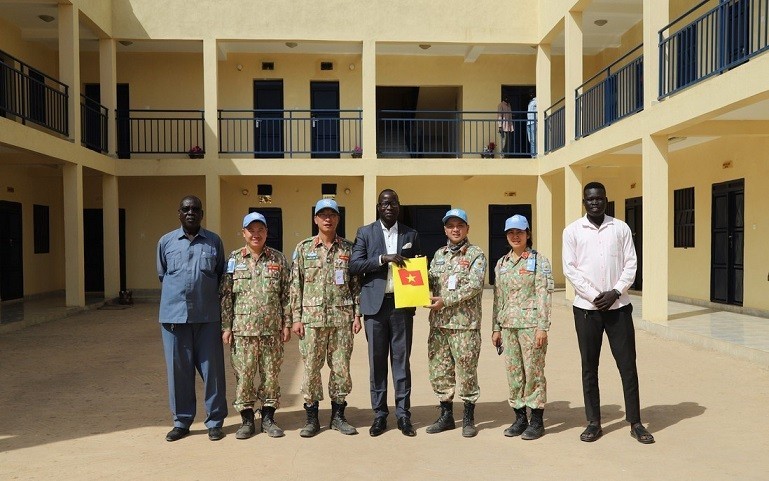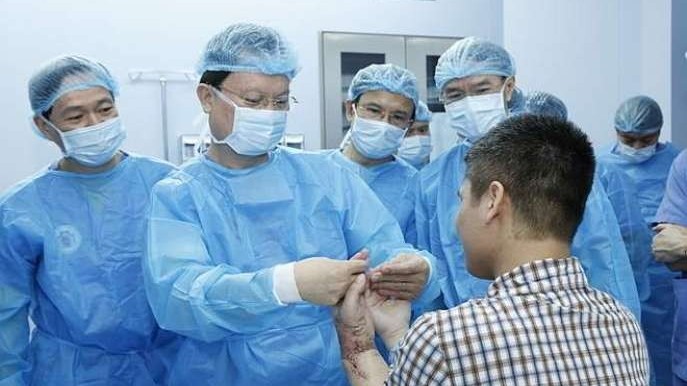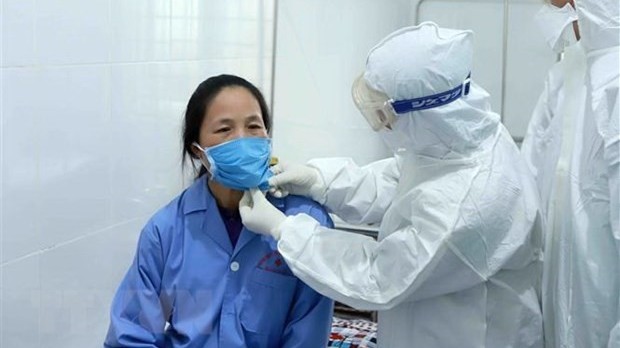Highlights of health sector’s 65-year achievements
| PM stresses need to protect people’s health, life amid COVID-19 | |
| Health ministry orders tight medical quarantine controls at border gates | |
| Health Ministry proposes cigarette tax hike, e-cigarette ban |
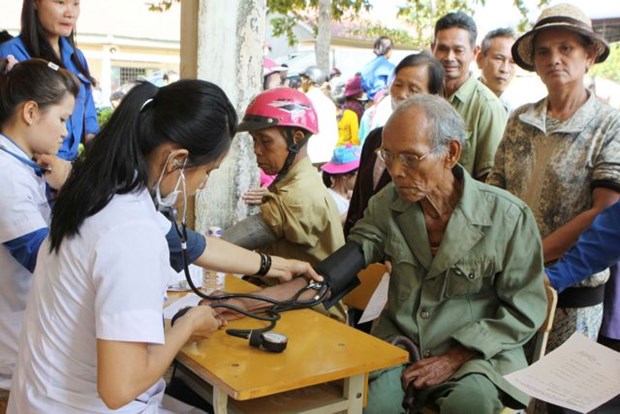
Residents in Ea Yong Commune in the Central Highlands province of Dak Lak's Krong Pak District receive free health check-ups(Photo: VNA)
Over the past 65 years, Vietnam’s health sector has striven to fulfill the task of protecting people and made increasingly active contributions to the development of global medicine.
Vietnam has gained a significant reputation worldwide as a bright spot for the implementation of UN Millennium Development Goals (MDGs). The network of preventive medicine, medical examination and treatment facilities, manufacture and supply of pharmaceuticals, medical insurance, and professional capacity of medical staff have all developed.
Brilliant achievements
Since the country's reunification on April 30, 1975, the health sector has made great strides and important achievements in the care and protection of people's health.
Regarding the fulfilment of the MDGs, Vietnam has been able to eradicate polio, and control neonatal tetanus, pertussis and diphtheria. Vietnam has maintained an immunisation rate of more than 95 percent for children under one, pregnant women and women of reproductive age. The rate of malnutrition among children under five decreased from 30.1 percent in 2000 to 13 percent in 2018. The rate of stunting malnutrition also decreased from 36.5 percent in 2000 to 23.3 percent in 2018.
According to a UNICEF report, Vietnam had made impressive progress in reproductive health and maternal and child health. With a four-fold decrease in the maternal mortality rate and a sharp drop in the under-five mortality rate, the report said Vietnam’s maternal and child health indicators were superior to other countries.
The health sector has reportedly kept HIV/AIDS prevalence in the community below 0.3 percent, and also reduced the number of new infections, and is continuing to expand drug dispensing facilities.
Over the last 30 years of implementing epidemic prevention and control, Vietnam has built up a capacity to monitor, detect, diagnose, identify diseases and respond quickly and effectively. The country's capacity to prevent dangerous and emerging diseases has been improved, as has treatment. Preparations to cope with dangerous diseases have also been put in place.
As a result, many dangerous epidemics have been controlled, repelled and eradicated, such as smallpox in 1978, polio in 2000 and neonatal tetanus in 2005. Since 2002 there have been no cases of plague. Some epidemics could have been hundreds or thousands times worse had it not been for the expanded vaccination programme that started in 1981, such as diphtheria, whooping cough and measles. Other circulating epidemics such as dengue fever, viral encephalitis, tuberculosis, typhoid and cholera have also been controlled.
Vietnam is also one of the first countries to successfully control SARS, A/H5N1 flu and A/H1N1 flu, and prevent a number of emerging dangerous epidemics such as influenza A/H7N9, Ebola and MERS-CoV.
Vietnam has a strong monitoring capacity. All emerging infectious diseases have been stemmed, including MERS-CoV, Ebola, influenza A/H7N9 and the on-going COVID-19. Effective infectious disease surveillance results from community supervision, and supervision at border gates and in laboratories.
Grassroots health network
Over the years, the grassroots health network in Vietnam has been strengthened and developed. Vietnam is internationally regarded as one of the few countries with a comprehensive and organised health network.
Currently, there are more than 700 district-level health centres, more than 11,100 commune-level health stations, of which more than 60 percent meet the national criteria. 100 percent of communes have health stations or inter-commune general clinics. 87.5 percent of commune health stations have doctors working (including both long-term and senior physicians, who alternate between two and three days a week). 96 percent of commune health stations have a midwife or obstetrics-paediatrics assistant doctor, and over 95 percent of villages have health workers or midwives.
There are now more than 1,400 hospitals and 180,000 beds nationwide, where 10 million people are treated each year and 2 million complicated surgeries are performed.
Vietnam is recognised as one of the few countries to master vaccine production technology, including three types of seasonal flu vaccines manufactured and registered for commercialisation. Biotechnology has been applied in the screening and diagnosis of measles, dengue fever and hand-foot-mouth disease.
The country has also mastered and improved many world-class medical techniques, and transferred advanced techniques for diagnosis and treatment such as laparoscopic surgery, cardiovascular intervention and diagnostic imaging. The country is also now an expert in assisted reproduction, treatment of blood cancer, myocardial infarction, bone-joint disease, burns and plastic surgery. Stem cell applications in the treatment of blood diseases have also been applied. The national health system has 15 facilities for heart, kidney, liver, corneal transplants, and haematopoietic stem cell transplants.
In October last year, two successful lung transplants marked a new feat in Vietnam’s organ transplant capacity, after the country conquered the world's most difficult transplant technique in 2018. In addition to conventional techniques for heart, liver, kidney, bone marrow and corneal transplants, Vietnam has confirmed its mastery of multi-organ transplantation.
In the field of obstetrics, Vietnam has also been successful with fetal intervention technology, which is the most modern technology in fetal medicine today. Last year, the Hanoi Obstetrics and Gynecology Hospital was the first public hospital to successfully implement this technique, successfully intervening for nearly 20 pregnant women with twins and twin-twin transfusion syndrome. The first baby to receive fetal intervention due to the syndrome was born healthy on December 14. The fetal intervention technique can intervene in most fetal organs, even the brain, heart and pleura and is considered humane, increasing the chances of saving lives for pathological fetuses.
Health care goes hi-tech
In the Fourth Industrial Revolution and global medical technology, the Vietnamese health sector has prepared and implemented a number of smart health applications and development activities, contributing to the modernisation of medical services, protection, care and improvement of people's health. The sector also expects to attract foreigners, Vietnamese living abroad and Vietnamese people with high incomes, to enjoy high quality medical care and treatment in Vietnam from 2020-30.
This Vietnamese Doctors’ Day, there will be no celebration as the Ministry of Health has ordered its departments in 63 provinces and cities to focus on fighting the COVID-19 epidemic.
At an online conference on the prevention and fight against the COVID-19 epidemic on February 25, Deputy Prime Minister Vu Duc Dam asked delegates at the Ministry of Health and more than 700 online points to take one minute to thank the health workers who laid down their lives and those who died during the 2003 SARS epidemic.
He said even without flowers to celebrate Vietnamese Doctors' Day, everyone should still thank their doctors.
“On February 27, we are grateful to the generations of physicians who sacrificed themselves for the cause of national liberation and unity, and protecting the health of the people, including those who died during the SARS pandemic in 2003," Dam said.
"They have left us with valuable examples and lessons,” he said./.
Recommended
 National
National
Vietnam News Today (Jun. 7): Prime Minister works with Estonian firms to accelerate projects in Vietnam
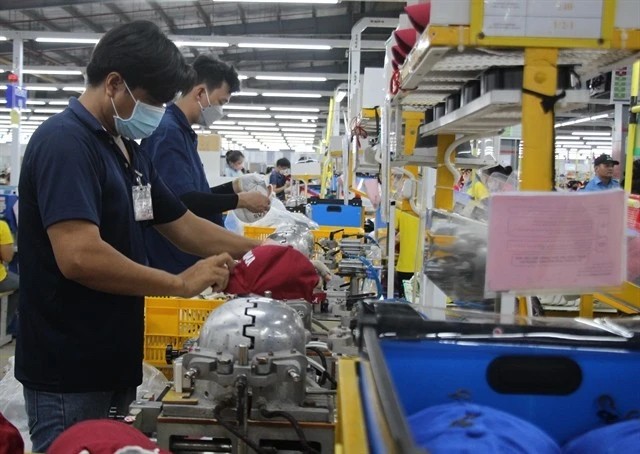 National
National
Vietnam News Today (Jun. 6): Foreign Investment in Vietnam Surges in Five Months
 National
National
Vietnam News Today (Jun. 5): PM sets off for attendance at UNOC 3 in France, official visits to Estonia, Sweden
 National
National
Vietnam News Today (Jun. 4): Vietnam - Promising Candidate for Southeast Asia’s Next Powerhouse
Popular article
 National
National
Shangri-La Dialogue 22: Vietnam Highlights Some Issues of Ensuring Stability in a Competitive World
 National
National
Vietnam News Today (Jun. 3): PM Pham Minh Chinh to Attend UN Ocean Conference, Visit Estonia, Sweden
 National
National
Vietnam News Today (Jun. 2): Vietnamese Trade Mission Sounds Out Business Opportunities in United States
 National
National








